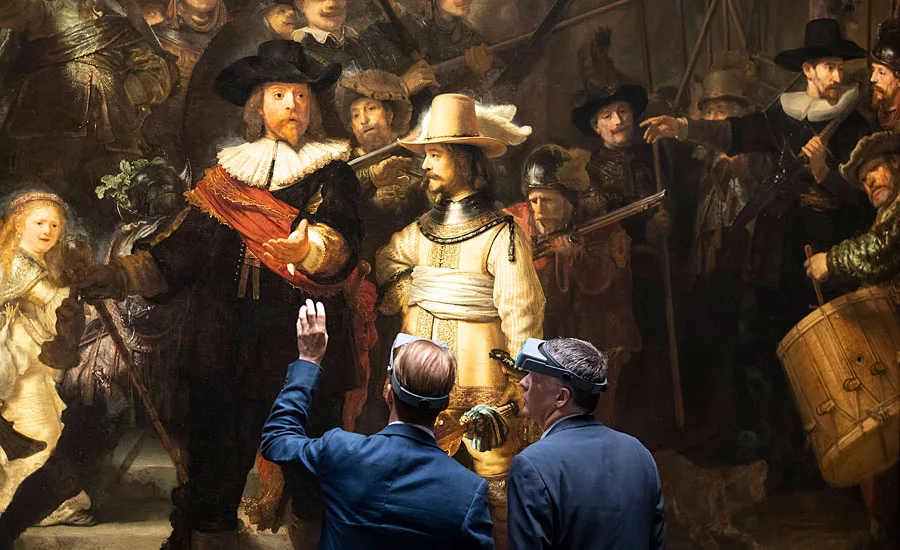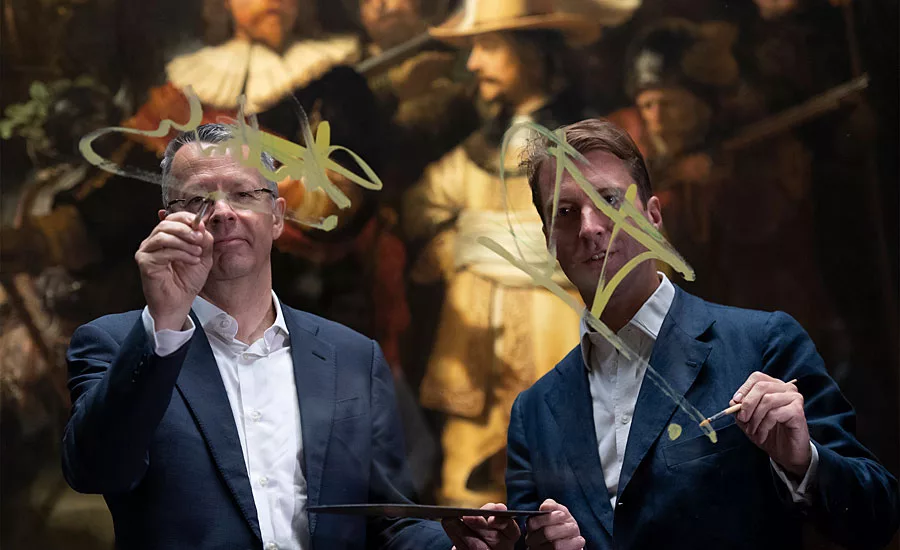AkzoNobel Partners with the Rijksmuseum for Live Restoration of Rembrandt’s Night Watch


One of the world’s most celebrated masterpieces, The Night Watch, will undergo the most innovative restoration in the history of art thanks to a partnership between Amsterdam’s Rijksmuseum and AkzoNobel.
In a spectacular fusion of old and new, Operation Night Watch will employ a series of ground-breaking tools and techniques to carry out a major investigation and restoration of Rembrandt’s 377-year-old painting. And it will all happen with the world watching and getting involved.
Starting on July 8, a dedicated project team of researchers, conservators and restorers from the Rijksmuseum will work in close collaboration with museums and universities in the Netherlands and abroad, including AkzoNobel color specialists. They will be encased in a special glass chamber, which has been constructed in front of the painting to ensure it can remain on display for museum visitors.
The initial research phase will go beyond anything previously attempted in the art world. It will involve taking thousands of ultra-high-resolution photographs (using a purpose-built imaging frame) and employ sophisticated scanners and lasers to investigate the artwork at microscopic levels. Once the research phase is over, several terabytes of data will have been collected. This will be carefully analyzed to determine the best way to proceed in terms of restoring The Night Watch for generations to come.
“We’re about to embark on the biggest and most innovative restoration in the museum’s 219-year history,” explains General Director of the Rijksmuseum, Taco Dibbits. “The Rijksmuseum continually monitors the condition of The Night Watch, and we’ve discovered that changes are occurring, such as blanching on the figure of the dog in the lower right of the painting. To gain a better understanding of its condition as a whole, the decision has been taken to conduct a thorough examination. So we’re extremely grateful to AkzoNobel, as the work that’s being carried out with their support is vital.”
Adds AkzoNobel CEO, Thierry Vanlancker, “We’re incredibly proud to be the main partner for this amazing project. As a company which believes in taking its innovation beyond generations, we’re excited to be contributing our expertise and passion for paint to help restore a cultural icon.
“There’s a natural link between us, not only because our company also has a long and proud heritage. We’re similarly driven by exploring new horizons and being inspired by the past while building for the future. So we have a lot of expertise to share and can’t wait to play a key role in helping to advance our technical understanding of color.”
Operation Night Watch will pose some fundamental questions. How was the painting made? What was the original appearance of the painting intended by Rembrandt? What is the current condition of The Night Watch? What type of paint alterations have taken place and why? The search for these answers will unfold in full view of the watching world, with visitors being able to see the scientists up close, while the whole thing will be streamed live online.
The technology being used is mind-boggling. The 11,400 photographs being taken will have a resolution of 5,430 dpi. Special scanners will be used to look into the cracks and crevices, while the pigments will be examined at a nano level using a hi-tech laser. The resulting images will be available to the public so they can help validate the data.
“We’re about to rock the world of paintings conservation and do things that have never been attempted before,” says Robert van Langh, the Rijksmuseum’s Head of Conservation and Science. “First of all, we need to find out what we’re up against. With a partner like AkzoNobel on board, we’re confident we’ll take our understanding of paint to the next level – and I don’t just mean one level, I’m talking three or four levels.”
The three-year partnership will continue a long association between AkzoNobel and the Rijksmuseum, which included supplying around 8,000 liters of paint during the museum’s decade-long renovation. This involved developing a special color palette (known as the Sikkens RIJKS Colors), which matched the colors originally used by architect Pierre Cuypers.
The Rijksmuseum – which attracted more than two million visitors in 2018 – owns the world’s biggest and most representative collection of Rembrandts. You can watch the restoration of The Night Watch as it happens by visiting www.rijksmuseum.nl/en/nightwatch
By AkzoNobel
Looking for a reprint of this article?
From high-res PDFs to custom plaques, order your copy today!





